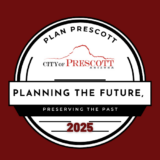GENERAL PLAN FAQS
GENERAL QUESTIONS ABOUT THE GENERAL PLAN
Who creates the plan?
The General Plan is written by the City Planning Staff with input from a Review Committee of citizens appointed by the City Council.
Why do we have a General Plan?
In 1998, the Governor signed into law the Growing Smarter Act and the Growing Smarter Plus Act became law in 2000. Combined, these Acts were the first significant state-level planning legislation in Arizona over 20 years.
The Act requires cities and counties to address the issues associated with urban growth and development. It was intended to strengthen the ability of communities in Arizona to plan for growth and to acquire and preserve open space. It is very broad in scope, and it requires communities to address growth and growth-related pressures by requiring new General Plan elements that:
- Identify growth areas, establish policies and strategies for new growth to pay its fair share of the new public facilities required to serve it;
- Identify open space needs and regionally plan for interconnected open space; and
- Analyze the environmental impacts of the development anticipated by the General Plan.
The City’s compliance with Growing Smarter requirements includes an extensive public participation program. Meeting Growing Smarter requirements presents another opportunity to reflect on current and future issues and to ensure that the General Plan is aligned with the needs of the community.
What are the required elements per ARS 9-461.05?
- Maps, diagrams, objectives, principles, standards, plan proposals
- Land Use
- Housing, business, industry, agriculture, recreation, education, public buildings, open space, public and private land uses
- Population density & demographics
- Programs for infill, air quality, energy use
- History, current, & future plans
- Circulation/Transportation
- Bicycles, cars, roadways, public transit
- Open Space
- Open Space & Recreational Area inventory, forecasted needs/policies for protecting open space and natural resources, regional system plan for open space
- Growth Area
- Identify areas suitable for growth
- Highlight residential, commercial, and industrial areas
- Efficient transit for growth and infrastructure funding plan
- Natural resource conservation
- Environmental Planning
- Air quality, water quality, natural resources, community-wide applicability
- Plan/Policy for developments to provide public services/benefits
- Water Resources
- Surface, groundwater, effluent supplies
- Demand for the future & plan to provide water for years to come
- Conservation
- Natural resources, forests, soils, rivers, waters, fisheries, wildlife, minerals, land reclamation, flood control, pollutions prevention, stream regulation, erosion prevention, watershed protection
- Recreation
- Reservations, parks, scenic drives, beaches, playgrounds, open space, bike routes
- More Extensive Transit Plan
- Bike routes, rights-of-way, terminals, viaducts/grade separations, aviation, rail/transit lines
- Public Services
- Police, fire, emergency services, sewage, disposal, drainage, utilities, rights-of-way, easements
- Public Buildings
- Civic and community centers, public schools, library, police, fire stations, etc.
- Housing
- Dwelling conditions, quality, affordability, adequate locations, forecasted needs
- Conservation, Rehabilitation, & Redevelopment
- Plan to eliminate slums; housing, business, industrial, & public building site development
- Safety
- Natural/artificial hazards, evacuation routes, road widths, water supply requirements, clearances, geologic hazard mapping
- Bicycles
- Routes, parking, crossings
- Energy
- Incentives for efficiency, identify policies for greater renewable energy usage
- Neighborhood Preservation & Revitalizations
- Programs for homeowners and maintenance, safety & security
How long will the process take?
The deadline to have the updated plan done is mid-2024 in order to start public comment period prior to scheduling the plan for public hearing.
How can I share ideas and participate?
On this website is a link to an online survey and fill in questionnaire. Comments can be emailed to staff at hello@planprescott.com.
When will the citizens vote on the plan?
The deadline is to have the plan approved by City Council no later than January of 2025 in order to get the plan on the August 2025 General Election ballot.
